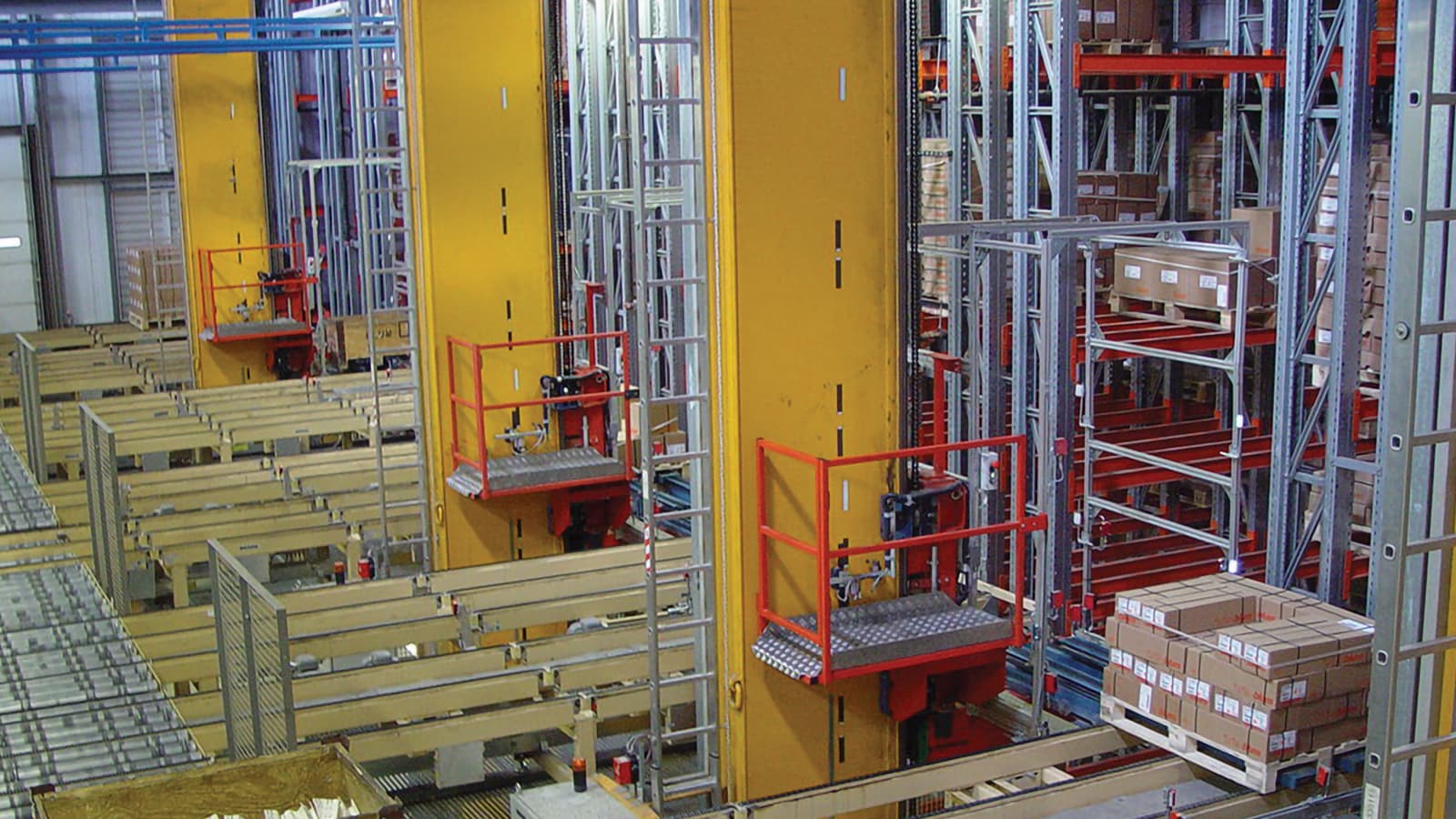Top 10 Trends Driving Automation in Manufacturing

What is driving durable goods manufacturers to automate the warehousing function? Manufacturers are requiring increased productivity and improved cost effectiveness to remain competitive. The tendency is to place the majority of focus on the assembly process and overlook other critical door to door elements that impact the total cost of manufacturing. The function of managing inbound, work-in-progress (WIP) and outbound finished product has become a key component as trends in the manufacturing market place have placed more demand on this function. This white paper will identify 10 factors from lean manufacturing to rising fuel cost that are driving the need to increase the use of automated systems.
1. Lean manufacturing
The process of lean manufacturing has been around for decades supporting the transformation from “push” operations to “build to order” operations. These pull type systems are adding more and more demand for real time visibility and control of the in-plant inventory including inbound material, WIP material and outbound finished goods.
2. Outsourcing
As manufacturers increase focus on their key market difference makers and highest value-add processes, less critical items are being outsourced. This trend has significantly raised the number of suppliers for many manufacturers requiring more sophistication in the receiving, put-away and picking processes prior to production.
3. Off-shoring
Similar to outsourcing, customers are taking advantage of low cost countries to provide various components. The downside of this business method is significantly increased lead times from overseas suppliers and larger order sizes that are required to maintain production without interruption. Space availability quickly becomes a key pain point for the manufacturing facility, sometimes causing manufacturers to take on the expense of off-site warehouses used for metering materials to the plant. Improving storage density and space utilisation can be the solution to eliminate other costly alternatives.
4. Shorter product lifecycles
Shorter product lifecycles demand high flexibility within the work site and greater speed to market with new products. Product transparency as it relates to warehousing automation keeps the management and delivery of materials to production a consistent process. By reducing or eliminating the human element, material flow will keep up with production demands allowing manufacturers to focus on new product introduction, assembly processes and quality. Commonality of containerisation is the key for the highest flexibility and transparency in the material flow process.
5. Mass customisation
Consumers demand products customised to their own preferences driving manufacturers to accommodate multiple configurations, colours and component options (SKU proliferation). This trend is revealing space constraint issues at the production floor, often times pushing inventory into the aisles or resulting in makeshift overhead structures for line side storage. The overall result is congestion and productivity loss. Sequenced delivery of components and point of use storage solutions that take advantage of vertical height can relieve these developing issues and improve productivity levels.
6. Global competition
Global competition is the number one threat to manufacturing companies across the country. More than ever, companies are forced to look at solutions that will reduce the total cost of manufacturing. Reduced labour cost, improved space utilisation, less inventory on hand, higher throughput and improved shipping accuracy are just some of the door to door elements that will have a positive affect when the right warehouse solution is chosen.
7. Supply chain pull
With all elements of the consumer supply chain attempting to achieve lower cost and increased competitiveness, inventory is pushed further up the supply chain to the manufacturer. Whether shipping direct or to a central distribution facility, manufacturers are faced with shipping smaller, more frequent deliveries within a tighter delivery window. The finished goods process including storage, picking, order preparation and shipping are challenged.
8. Track and trace
Requirements for product tracking continue to increase with industry standards and regulations. Effective warehousing solutions coupled with the right tracking infrastructure bring together the key elements of data capture.
9. Green initiatives
Manufacturers are getting on board with green initiatives reviewing their current carbon footprint for improvement. More efficient equipment technologies and control methods in automation can improve the overall equation.
10. Rising fuel cost
Rising fuel cost affects the entire supply chain including the manufacturer. The right warehouse solution along with Warehouse Control Software (WCS) will optimise order consolidation and improve trailer load density.
Conclusion
Each trend mentioned in this paper has corresponding implications that face most manufacturers today. The tendency has always been to focus on the assembly/production process and overlook other critical elements that can reduce the total cost of manufacturing.
Automated material handling and storage solutions applied to inbound materials, production feed and finished goods inventory functions will lower the total cost of manufacturing by reducing labour and inventory while improving accuracy, throughput and space utilisation. Additionally, manufacturers will improve their customer service levels with increased delivery performance and quality.
The idea is to organise and track your material flow from the receiving and put-away of raw materials to the picking and shipping of finished goods. However, it should be noted that diverse technologies and solutions can lead to different results. The final solution should be carefully aligned with the manufacturer’s strategic business plan objectives.
